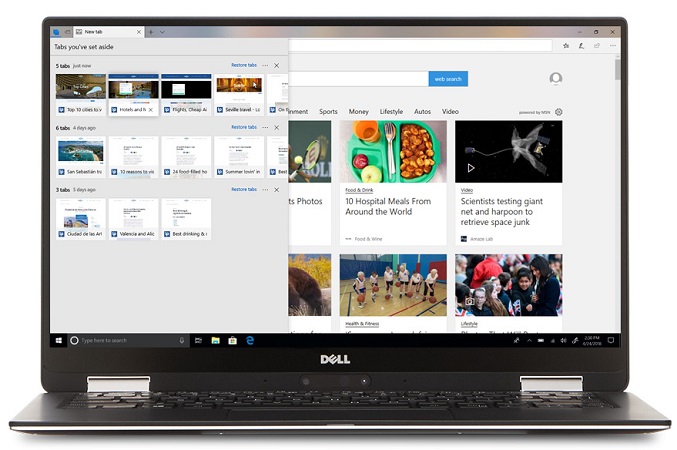Microsoft Edge to Run On Google Chrome's Rendering Engine - Report
A Windows Central report Monday claimed Microsoft is replacing the EdgeHTML rendering engine in its Edge browser with Blink, a rendering engine from Chromium, the open source version of Google Chrome. Google forked Blink from Apple’s open source WebKit rendering engine, which is used by the Safari browser and previously by Chrome and other Android browsers.
According to Windows Central’s anonymous sources, Microsoft intends to replace the Edge browser with a new browser code-named Anaheim on the Windows 10 operating system. It’s not clear if the new browser would keep the Edge brand name or get a new name. It’s also unknown whether or not the new browser will use the Edge UI.
Microsoft has already made this move on Android and iOS, where its Edge browser uses the Blink and Webkit rendering engines, while using the Edge UI on top. When Microsoft’s Sean Lyndersay, the Principal Program Mananger Lead for Edge, announced the Android and iOS browsers last year, he said the company is committed to EdgeHTML, despite its replacing it with Blink and WebKit on Android and iOS.
"Part of our strategy with EdgeHTML is to build an engine that, instead of replicating (and, in some senses, competing with) the underlying platform, integrates and works with it to deliver the best possible security, accessibility, battery life, interactivity, just pure raw performance on that platform. We are proud of the work we’ve done with EdgeHTML on Windows 10, all while driving the web forward with new capabilities and supporting interoperable standards. We are fully committed to continuing to do so into the future, across the full spectrum of Windows 10 platforms and form factors."
If the new report is true, that commitment to EdgeHTML has all but disappeared, as EdgeHTML will live in nothing but name (if that) inside all of Microsoft’s browsers, as Microsoft replaces it on each platform with either Blink or WebKit.
Chromium Dominance
Chrome and other Chromium-based browsers, such as Opera and other Android browsers, already dominate in browser market share. Some, including Mozilla developers, have been worried that as Blink and WebKit’s (a very similar rendering engine to Blink) market share increases, developers will have no interest in testing their websites on other browsers.
Steve Fink, a developer working for Mozilla on performance and tooling issues, warned back in 2013, right after Opera switched to WebKit (and later to Chromium/Blink), that rendering engine monoculture will create a myriad of problems for the web, including:
Get Tom's Hardware's best news and in-depth reviews, straight to your inbox.
- WebKit bugs becoming part of the web platform because fixing them would break too many websites at once
- A slow down in innovation
- Giving third-parties, such as music studios, more control over what features can be developed for the web
- Feature bloat
This warning came five years ago, but not too many web developers (or browser users) took heed. Therefore, it may now be too late to do anything about it, and it may also be why Microsoft is reportedly planning to replace EdgeHTML with Blink.
Usually, lack of competition is a negative for end users. However, it’s a little different for open source projects because they aren't usually controlled by a single entity. And if they are, other people can just fork them and develop their own version.
However, if even a company like Microsoft is no longer willing to develop a new rendering engine or a fork of an existing open source rendering engine, then it may no longer be practical enough to fork such large projects. Therefore, the future of the web may depend on how Google and Apple continue to develop the Blink and WebKit rendering engines.
Lucian Armasu is a Contributing Writer for Tom's Hardware US. He covers software news and the issues surrounding privacy and security.
